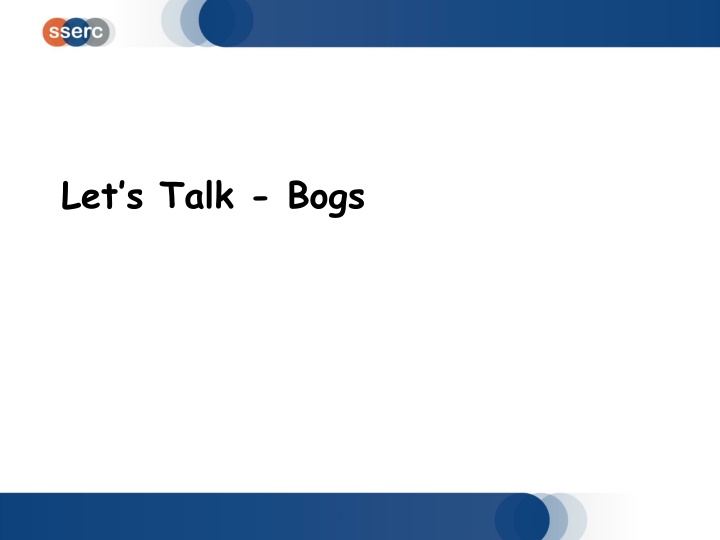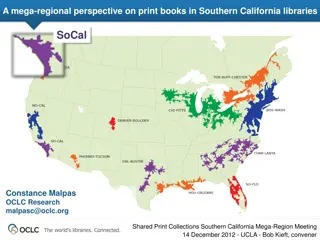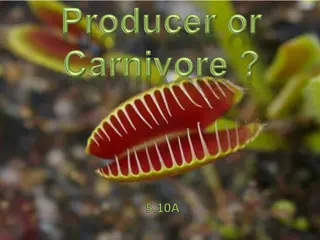
Exploring the Importance of Bogs in Ecosystems
This content delves into the significance of bogs in nature, discussing how they act as carbon and water stores, essential plants like Sphagnum moss, and the process of peat formation. It also touches on practical activities related to understanding wetland ecosystems and the absorption capabilities of various materials.
Download Presentation

Please find below an Image/Link to download the presentation.
The content on the website is provided AS IS for your information and personal use only. It may not be sold, licensed, or shared on other websites without obtaining consent from the author. If you encounter any issues during the download, it is possible that the publisher has removed the file from their server.
You are allowed to download the files provided on this website for personal or commercial use, subject to the condition that they are used lawfully. All files are the property of their respective owners.
The content on the website is provided AS IS for your information and personal use only. It may not be sold, licensed, or shared on other websites without obtaining consent from the author.
E N D
Presentation Transcript
Experiences and Outcomes I can explore examples of food chains and show an appreciation of how animals and plants depend on each other for food [SCN 1-02a] I can use my knowledge of the interactions and energy flow between plants and animals in ecosystems, food chains and webs. I have contributed to the design or conservation of a wildlife area. SCN 2-02a Through carrying out practical activities and investigations, I can show how plants have benefitted society [SCN 2-02b] I can report and comment on current scientific news items to develop my knowledge and understanding of topical science. SCN [2-20b]
Experiences and Outcomes Lit 1-02a, Lit 2-02a, Lit 1-09a, Lit 2-09a MNU 1-03a, MNU 2-03a, MNU 2-11b,
Principles and Practice develop a curiosity and understanding of their environment and their place in the living, material and physical world develop skills of scientific inquiry and investigation using practical techniques develop skills in the accurate use of scientific language, formulae and equations express opinions and make decisions on social, moral, ethical, economic and environmental issues based upon sound understanding Benchmarks Inquiry and investigative skills
What is peat? It is composed mainly of wetland vegetation: principally bog plants including mosses, sedges, and shrubs Peat forms when plant material does not fully decay in acidic and anaerobic conditions This process takes a long time: it take a year for 1mm of peat to form
Why are bogs important? They act as a carbon store They act as a water store Sphagnum moss is an important plant in bogs Holds up to 20 times its weight in water
What does this mean? What other materials hold this amount of water? Which materials are absorbent?
How a bog is formed? A bog is formed when a lake slowly fills with plant debris. Sphagnum moss, as well as other plants, grow out from the lake's edge. The vegetation eventually covers the lake's entire surface. Bogs can also form when the sphagnum moss covers dry land and prevents precipitation from evaporating http://www.snh.gov.uk/about-scotlands- nature/habitats-and-ecosystems/mountains- heaths-and-bogs/peat-bogs/ Peat forms when plant material, usually in wet areas, is inhibited from decaying fully by acidic and anaerobic conditions. It is composed mainly of wetland vegetation: principally bog plants including mosses, sedges, and shrubs
About Sphagnum mosses are the amazingly multi-coloured living carpets of moss found in wet places like peat bogs, marshland, heath and moorland. When seen up close, they are very beautiful, but they also play a very important role in the creation of peat bogs: they hold water in their spongy forms long after the surrounding soil has dried out. In this way, they provide essential nutrients to the soil and help to prevent the decay of dead plant material which gets compressed over hundreds of years to form peat. How to identify There are at least ten species of Sphagnum moss in the UK, some of which are very difficult to tell apart. These species range in colour from red and pink, to orange and green. Sphagnum moss plants are very small, but they grow together in close proximity forming spongy carpets; 'hummocks' are even created when the mosses grow together to form large mounds up to a metre high http://www.wildlifetrusts.org/species/sphagnum-moss
Lets Talk - bogs You have 10 statements relating to your picture. Award an importance mark to the statements. 5 is the highest mark meaning very important. You only have 35 points to give out. Write the points on the statements and arrange in order of importance. Compare your result with the other groups. Another option: Diamond 9 (but you have 10 statements) Arrange in order of importance
Additional information http://www.snh.gov.uk/about-scotlands- nature/habitats-and-ecosystems/mountains-heaths- and-bogs/peat-bogs/ http://www.wildlifetrusts.org/species/sphagnum-moss http://www.moorsforthefuture.org.uk/news/innovative- reintroduction-sphagnum-mosses-vital-restoration- upland-peatbogs http://www.moorsforthefuture.org.uk/factsheets https://bogology.org/2013/09/27/sphagnum-moss-bog- plant-extraordinaire/






















